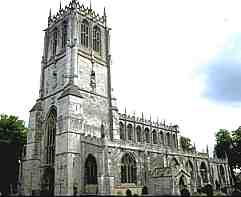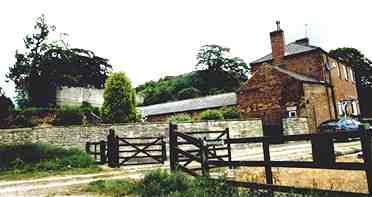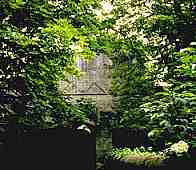 |
|
Paleography
Exercises |
|
Indenture
of 1546, Nottinghamshire Archives DDFJ 7/80/11. All
images by permission of Nottinghamshire Archives.
|
|
|
|
|
Yes,
I accept that 1546 is not counted as the middle ages in anybody's reckoning,
but this document has some significance in relation to change and continuity
at the end of the medieval era. The continuity comes with the form of
the document, an indenture
on parchment,
complete with wavy edge at the top and the seals
of one of the parties to the agreement attached to the bottom. An
indenture is an agreement made between two parties, in which two copies
of the document are made, then separated with a wavy cut. Each party retains
one copy, which bears the seal of the other party. The language
of the document is now English, and apart from a few eccentricities of
spelling, quite comprehensible to modern readers. |
|
The
change relates to the place of this document in the events of the day.
Most scholars of medieval English history regard the Reformation as the
event that finally and ultimately put an end to the middle ages. This
document dates from 1546 in the reign of Henry VIII, now described in
the document itself as defender of the faith and in Earth the Supreme
head of the church of England and also of Ireland. The monasteries
had been dissolved and their wealth given over to the crown. The churches
still contained chantries, in which priests said masses for the souls
of the dead who had made over the funds to maintain the chantry structure
and its priest. The writing was on the wall however, and their days were
numbered. One chantry priest seems here to be ensuring that he has somewhere
to live in the case of his forced redundancy. |
 |
One
party to this document was Sir William Marshe, chantry priest of the parish
church of Tickhill, in Yorkshire. This imposing church is one you see
on a distant hill while travelling up the A1 and wonder what it is. It
no longer contains any sign of a chantry, although it does have a number
of interesting medieval bits and pieces. In this document he leases his
house and several parcels of land to William Hall and Johan his wife,
in return for the use of a parlour and chamber, for a period of 21 years. |
|
Tickhill
parish church. |
|
One
of the parcels of land is described as lying on the south side of the
castle of Tickhill. |
 |
The
motte of Tickhill Castle, seen from a neighbouring farm yard, overgrown
with trees and shrubs behind the farmhouse. |
 |
There
is not much to be seen of Tickhill Castle today. Behind the moat, in an
area overgrown with jungle, can be seen a bit of worked stone from the
gatehouse. The motte is bare of any sign of a building. What is now a
sleepy village, where the main occupation seems to be feeding the ducks
on the village pond, once had a Franciscan friary and a hospital, fragments
of which remain. But enough of the travelogue and on with the document! |
|
Fragment
of the gatehouse. |
|
|
overview | seal | text
| alphabet | abbreviations
| structure | exercises
|
transcript
| |
|
Click
on each of the above to walk your way through the text. The transcript
will appear in a separate window so that you can use it for reference
at any time. These exercises are designed to guide you through the text,
not test you, so you can cheat as much as you like. |
 Script sample for this example Script sample for this example |
 Index
of Exercises Index
of Exercises |
 Index
of Scripts Index
of Scripts |
|
 |
 |
 |
 |



